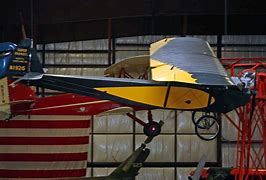Edward Bayard Heath designed and built the Heath Parasol. A successful American air racer and owner of an aircraft parts supply business, Heath constructed his first Heath Parasol in 1926. Surplus wings from a Thomas-Morse Scout contributed to the parasol wing mounted above a steel-tube structure fuselage. A Henderson four-cylinder motorcycle engine powered the Heath Parasol. He built the Super Parasol the next year.
Promoting the Heath Super Parasol
Without a doubt, the Heath Super Parasol always attracted attention wherever it went. Landing on a Chicago rooftop in 1931 proved exceptional. The entire escapade proved to be an eye-catching stunt. This seemed to be a great way to promote the new Heath Super Parasol.
To enable a successful roof landing, workers marked out a 300-foot square on the airport to see how things would go. As a result, they discovered an arresting gear of sorts essential to prevent the airplane falling off the roof. A hand-held length of (bungee) shock-cord did the trick with three husky anchor-men holding onto each side. With the anchor-men in standing position the angle proved too high. The tail always reared up splintering the propeller. Three props later, with the correct angle achieved, the system seemed to work well enough to try out on the building’s rooftop.
It should be noted that pilot Duke Mueller seemed confident that all would go well. He planned to attempt it on the rooftop as he practiced on the airport square. The ground crew, however, became slightly bothered by the fact there could be no slip-ups. With newsreel cameras already set-up, the excitement mounted. High over Chicago, Mueller lined up carefully on the 300-foot square on the rooftop.
Success!
A triumphant landing brought a volley of cheers and sighs of relief from everyone. For the take-off back to the airport, a wooden ramp was constructed over the parapet. Following the ramp installation, Mueller gunned the engine and soared off the roof with ease. Movie film captured the whole incident, including the landing and take-off. The cameras purposely avoided shots of the arresting gear or the wooden ramp. As a result, the excitement whole affair appeared quite exciting on the movie screen.
Heath died in February 1931 while testing a low-wing aircraft. He is best known as having pioneered the homebuilt aircraft industry by introducing the kit concept of packaging materials needed to build an aircraft.

